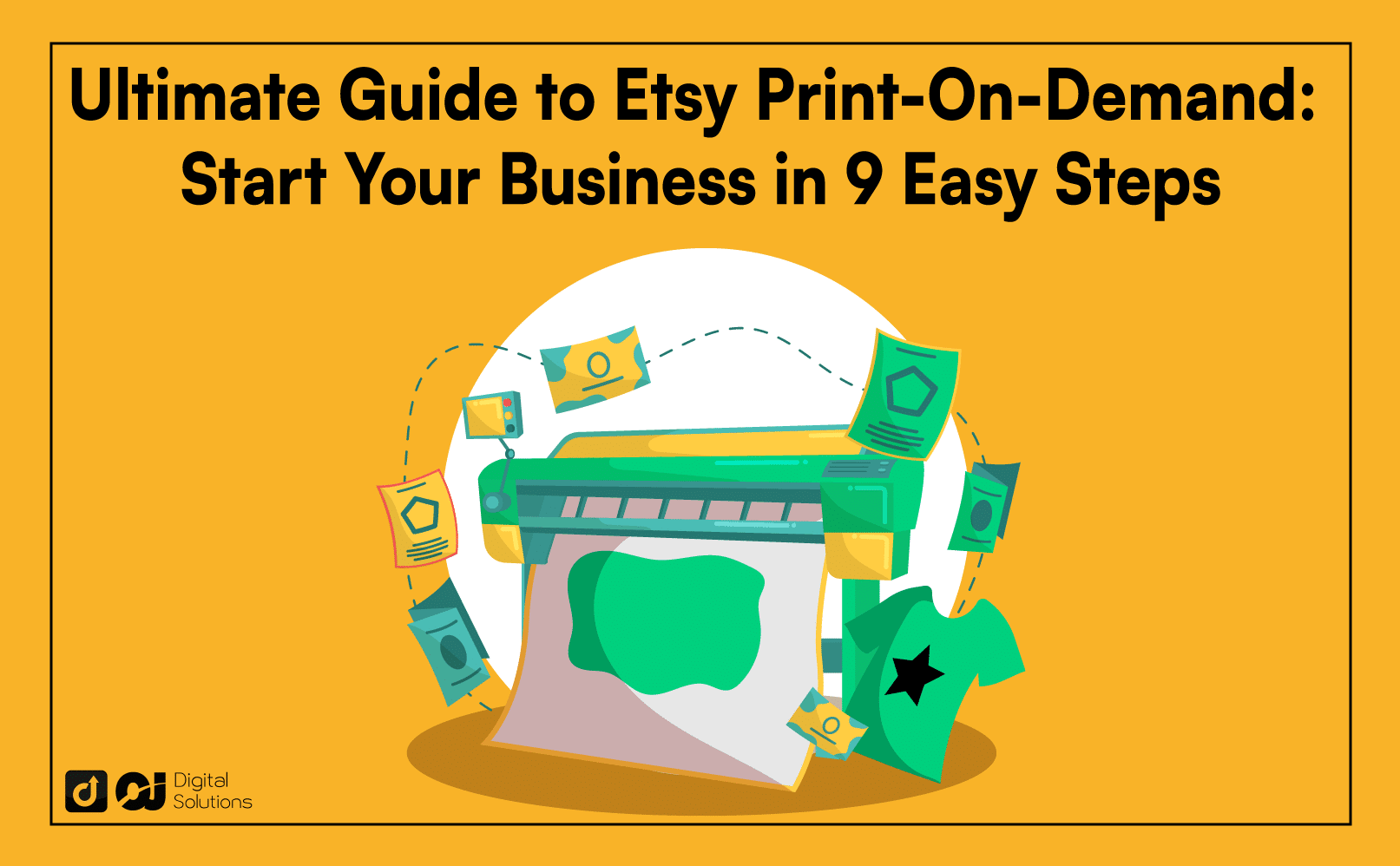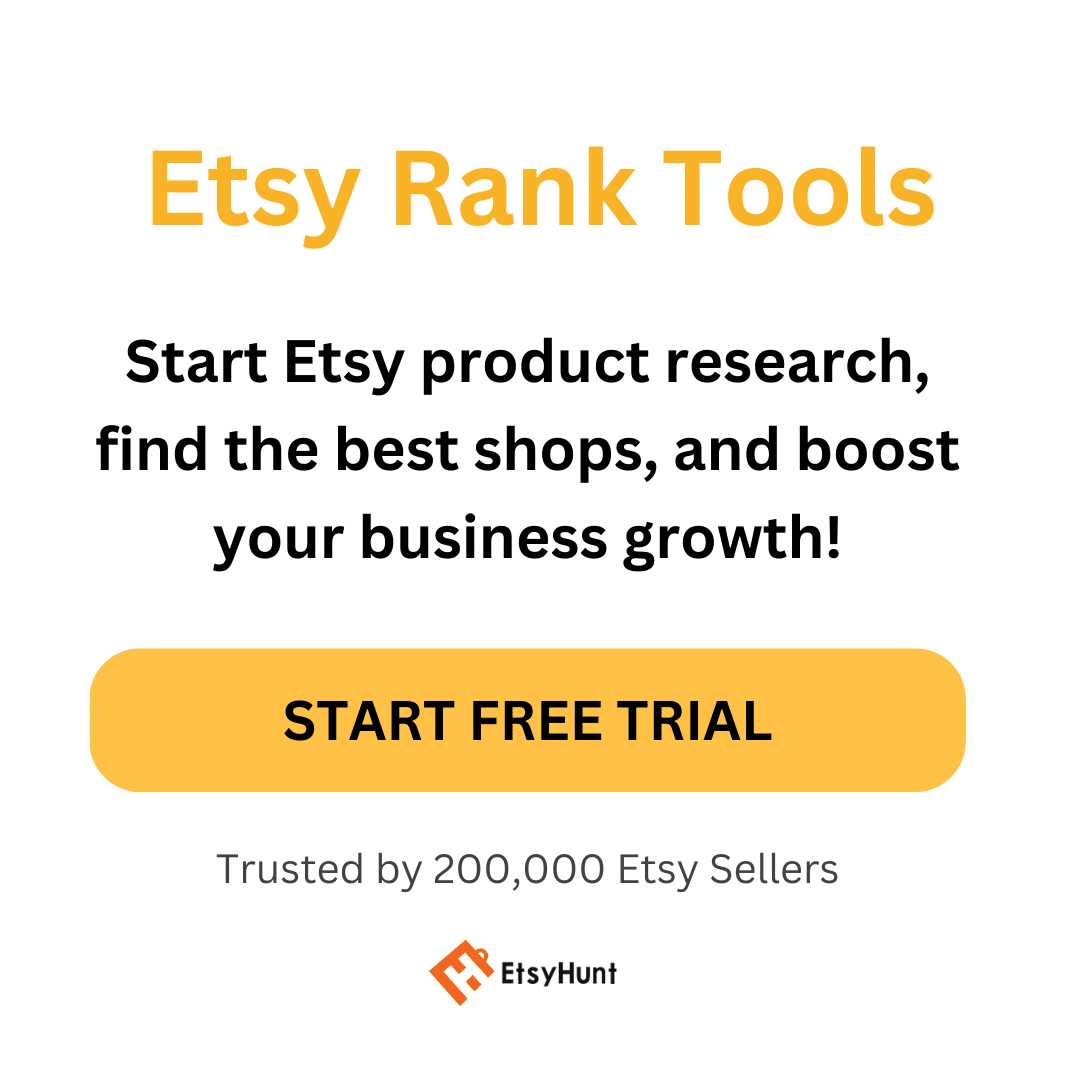Are you seeking a low-cost solution to turn your passion into a thriving online business?
An Etsy print-on-demand business model is perfect for you. It lets you showcase your unique designs and sell various products without the hassle of inventory and order fulfillment.
The question is how to do print-on-demand on Etsy.
You’ve come to the right place for answers.
I wrote this guide to teach you everything about Etsy print on demand.
I’ll explain how to sell print-on-demand on Etsy, introduce the best print-on-demand sites for Etsy, and give you tips to increase your sales in your first few weeks.
Let’s begin.
What Is Etsy Print-On-Demand and How Does It Work?
Etsy print-on-demand is a business model where you work with a print provider that handles product procurement, printing, and shipping.
As an Etsy seller, you don’t have to keep inventory and manage the order fulfillment process. The print-on-demand service will do those for you.
Under your brand, you can offer products from the provider’s catalog, including apparel, tote bags, mugs, and home decor.
Your contribution would be the design. You can make an otherwise generic item unique by customizing it.
For example, you can offer different designs for a T-shirt without buying it in different sizes and colors, then printing your artwork onto them.
Here are your responsibilities under this business model.
Creating the design
Choosing products to sell
Uploading products to Etsy
Handling customer service
Print-on-demand is similar to a dropshipping business model, wherein you only have to facilitate the ordering process between customer and supplier.
Here’s how the process goes.

A customer places an order.
The print-on-demand partner automatically receives the order details.
The print-on-demand partner prints your design on the customer’s chosen product.
The print-on-demand partner packages and ships the item to the customer.
You only pay the provider when you order, making this a low-cost solution to opening an Etsy store.
Does Etsy Allow Print-On-Demand? Rules You Need To Follow
Yes. Etsy supports print-on-demand services and even allows integrations with many print providers.
However, store owners must still comply with the platform’s policies. Here are some rules to remember.
You must create the design yourself (or have the right to use the design for your shop).
You must not infringe on any intellectual property.
You must state in your listing that your Etsy store works with a production partner.
You must also adhere to the platform’s guidelines for store owners, including product offerings and customer communication.
I recommend reviewing the Etsy Seller Handbook before starting an Etsy store.
How To Start a Print-On-Demand Business on Etsy in 9 Simple Steps
Follow these steps to start your Etsy print-on-demand store on the right foot.
1- Find Your Niche and Choose a Product.
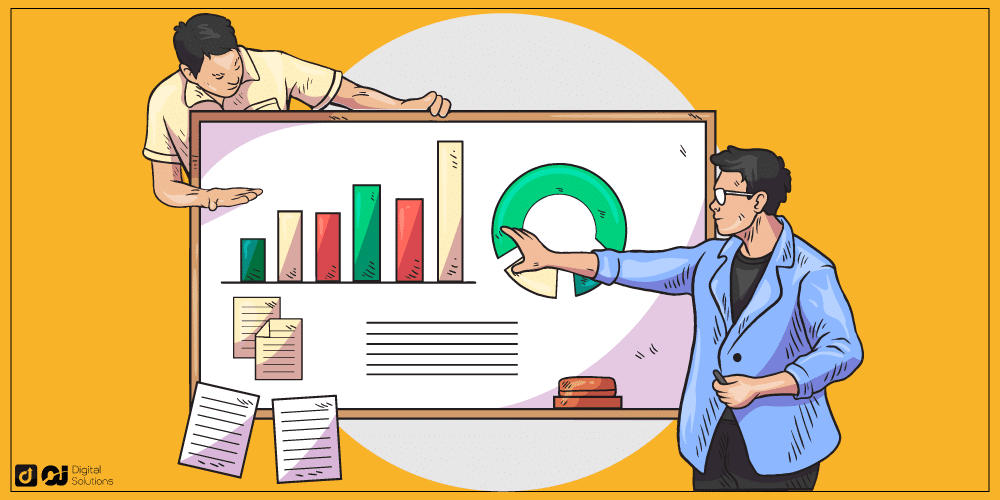
Choose a niche that aligns with your skills and interests.
For example, if you like drawing cute pictures of animals, consider the pet category. If you like calligraphy, try designing quotes for t-shirts.
Review the current landscape. Check the competition and see if you can leverage any untapped niches.
You might be able to find a niche without a quality seller and stand out as the only Etsy shop offering high-quality products for that specific category.
Write down everything that comes to your mind. The next step is researching the market and your target audience.
Do You Have a Market for Your Products?
You may have a unique idea, but it may not have a market large enough to sustain your business.
Ensure there’s sufficient demand for your product idea. You can use EtsyHunt’s Product Database or keyword research tool to gauge the demand.
Take the keyword most relevant to your product idea and enter it into the research tool, like “anime ADHD journal,” for example.

EtsyHunt will display the search volume on Etsy for that particular keyword. A high volume means it has a high demand.
Remember, it’s about what your audience wants, not just what you want. You must know what appeals to your audience. Understanding your target audience allows you to tailor your product offerings and marketing tactics.
What Is Your Unique Selling Proposition?
Don’t get discouraged by the competition. For example, many Etsy sellers still succeed in selling T-shirts despite the extremely competitive landscape.
If you want to sell T-shirts, go for it. However, you must have something unique to offer.
Why would shoppers choose your shop instead of more established sellers?
It could be your product quality, design style, or your technique.
When you find your unique selling point, highlight it in your Etsy listings and marketing efforts to target consumers who resonate with your offerings.
What Are the Most Popular Print-On-Demand Products on Etsy?
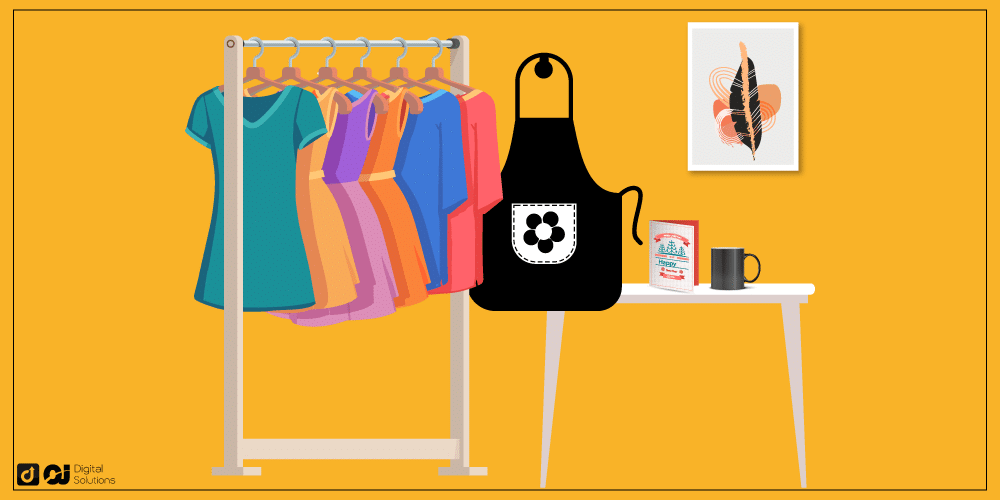
Apparel
Clothing items still dominate the print-on-demand space, especially T-shirts. It’s one of the top products for beginners, making for an extremely competitive landscape. You can also consider hoodies, sweatshirts, and dresses.
Cards
Customers appreciate the freedom to add their own messages, names, or photos to greeting cards to make them more special. They can enjoy a well-designed card with a personal touch.
Drinkware
Mugs are classic POD items that never get old. People often give them as gifts, so consider this fact when creating designs and optimizing your listings. You can also explore water bottles and wine glasses.
Wall Decor
You can practice your artistic skills by creating paintings and digital art that people can hang in their homes. This product has a high demand and competition, but you can still be unique if you’re creative.
Kitchenware
Some print-on-demand partners also offer kitchenware, like aprons and cutting boards. You can offer them as custom products, which have a high potential on Etsy. You can add your own design and also allow customers to personalize it with their name, monogram, or any text.
2- Choose a Print-On-Demand Provider.

After choosing a product, find print-on-demand partners offering and shipping it to your customer’s location.
Consider these factors choosing the best print-on-demand for Etsy.
Production method
Turnaround times
Return and refund policies
Quality control measures
Product catalog
Other partner-specific requirements or restrictions
You must find a trustworthy, Etsy-approved supplier that meets your business requirements and customers’ expectations. You want to avoid customers receiving a faulty product or experiencing delays.
You must also review the following elements
Fulfillment Methods
Determine if the provider’s Etsy print fulfillment process can accommodate your requirements.
Costs and Fees
Compare the base costs, shipping costs, monthly fees, and other additional charges of different print-on-demand providers. See which one is the most viable option for your business.
Product Quality
Assess the material and technique used to determine the product quality. You can also check customer reviews or order a sample to assess the quality of items.
Branding and Customization Options
How can you incorporate your brand into your orders? Many print-on-demand suppliers offer various custom packaging options at an additional cost, such as custom packing slips and inserts.
Print-on-Demand Etsy Integration
Many providers offer Etsy integration, helping you streamline your business processes by syncing your product listings and automatically fulfilling your orders.
You can complete these tasks manually, but an official print-on-demand integration helps you focus more on creating designs, growing your business, and offering excellent customer service.
Production Facilities and Fulfillment Centers
Etsy allows you to sell products worldwide, but does your preferred print-on-demand company offer worldwide shipping? Does it have multiple locations to fulfill orders internationally within a reasonable timeframe?
The 5 Best Etsy Print-On-Demand Partners
Where do Etsy sellers buy their shirts?
Here are a few of the best print-on-demand sites Etsy sellers use.
| Printify | Printful | Gelato | Merchize | Awkward Styles | |
|---|---|---|---|---|---|
| Free Plan | ✔️ | ✔️ | ✔️ | ✔️ | ✔️ |
| Monthly Subscription | Starts at $24.99/month | ❌ | Starts at $14.99/month | Starts at $79.99/month | Pro: $25/month |
| Etsy Integration | ✔️ | ✔️ | ✔️ | ✔️ | ✔️ |
| Product Catalog | 850+ | 300+ | 100+ | 350+ | 150+ |
Printful
Printful prioritizes quality and consistency with more customization options. It also integrates with more platforms outside Etsy.
Printify
Printify offers flexibility and affordable prices. It connects you to various print providers, allowing you to choose the best one for your needs.
Gelato
Gelato prides itself on premium, hand-selected products. It has an extensive range of wall art, calendars, and cards and carries basic apparel products.
Merchize
Merchize is one of the best Etsy T-shirt shops, specializing in custom clothing. However, it also offers Home & Living items and accessories.
Awkward Styles
Awkward Styles offers better pricing with high-quality printing. It also has a larger printing area for some clothing pieces.
3- Create Your Designs.
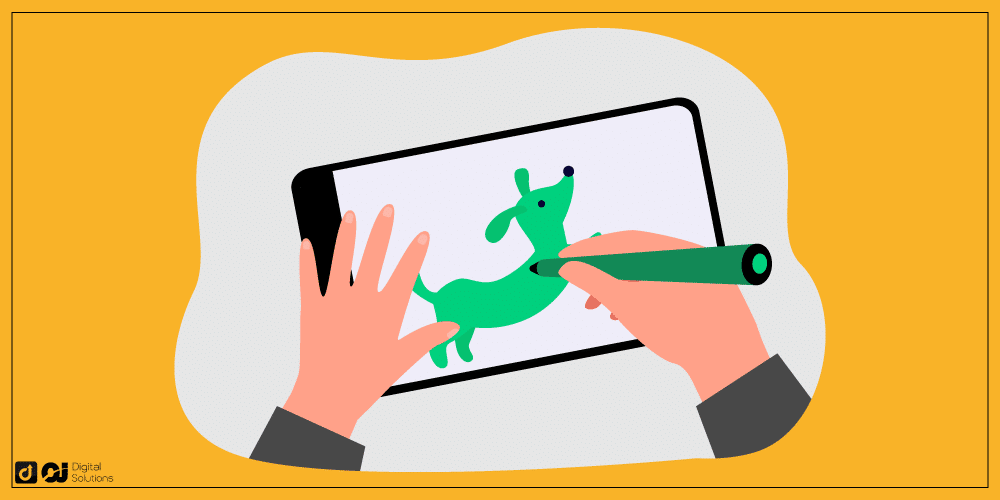
It’s time to let your creative juices flow.
Here are some things to remember when creating custom designs.
Consider the Product Specifications.
Ensure the design will translate well onto your chosen product. For example, a design for a t-shirt may not appear correctly on a mug because of the limited space.
Research Current Trends.
See what’s relevant in the market today that you can apply to your products.
Analyze the Competition.
Review your competitors’ offerings and gather inspiration without copying their designs. Rather, identify gaps you can fill or areas you can do better.
Review the File Requirements.
Verify the size, file format, resolution, and color requirements.
Consider the colors, typography, composition, and other elements when designing.
Choose a Photo Editing Software.
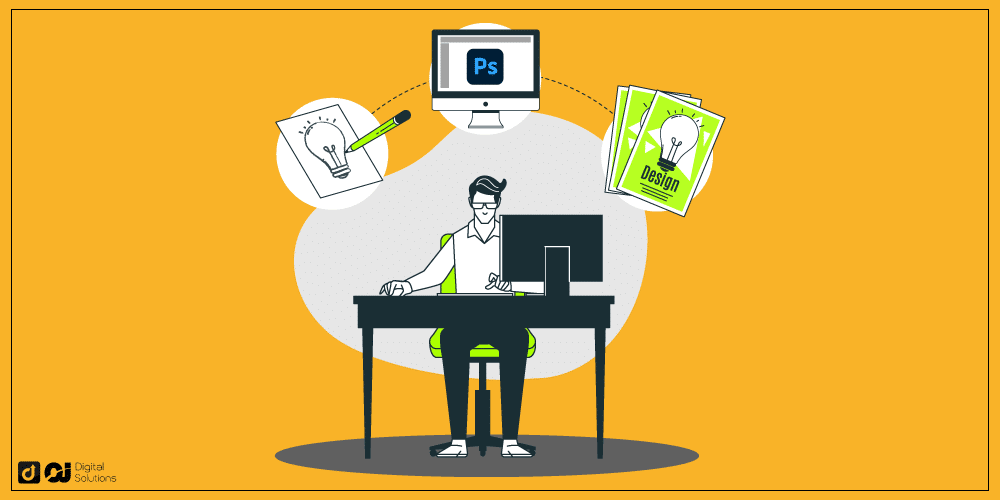
How do you want to create your designs?
Depending on your budget, you can try free or paid digital art software.
Here are some tools you can use.
Canva
Adobe Illustrator
Procreate
The designs you want to create also affect the tool you must use. For example, watercolor art requires a brush tool, available in Photoshop and Procreate.
Hire a Graphic Designer.
Outsourcing your work isn’t against Etsy rules. If you can legally use the artwork commercially, you can sell it on Etsy.
You don’t need to hire a full-time employee. You can find contractual designers on Upwork, Fiverr, or Facebook Groups.
Choose your designer carefully. It should be an individual you can work with for a long time to avoid constantly starting from scratch when communicating your brand, preferences, and guidelines.
If you go this route, ensure you get written permission from the artist to use their artwork. Otherwise, they can claim infringement on their property and shut down your Etsy store.
Create Mock-Ups.
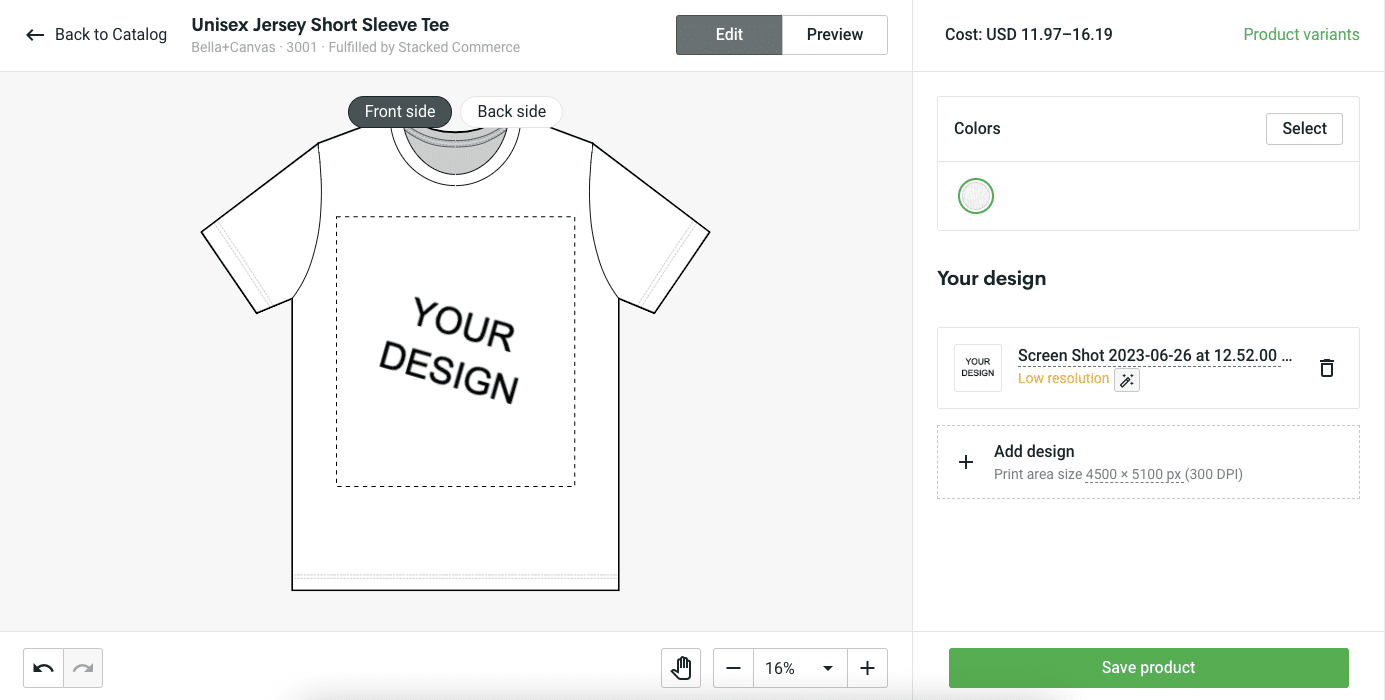
Once you have your initial designs, it’s time to create mock-ups on the POD platform.
Mock-ups allow you to present your designs on the actual product. They allow your customers to visualize a realistic image of your offerings.
Different platforms have different mock-up generators but often work the same way. You must upload your design to the product personalization tool and adjust its position.
Download the mock-ups to add the photos to your product listing and share them on social media.
4- Open an Etsy Store.
Here’s how to open your Etsy store.
Set Up Your Shop.
You can use your Etsy buyer account to open a shop. If you don’t have one, you can easily create one by going to the Etsy website and clicking Sign in at the upper right corner.
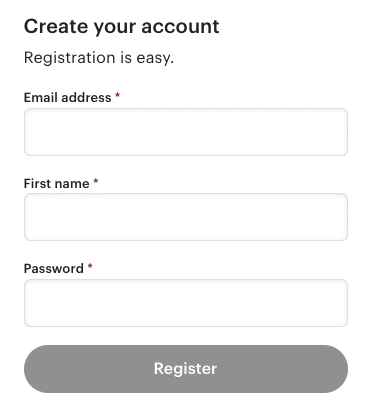
After logging into your account, go to Etsy.com/sell and click Get started.
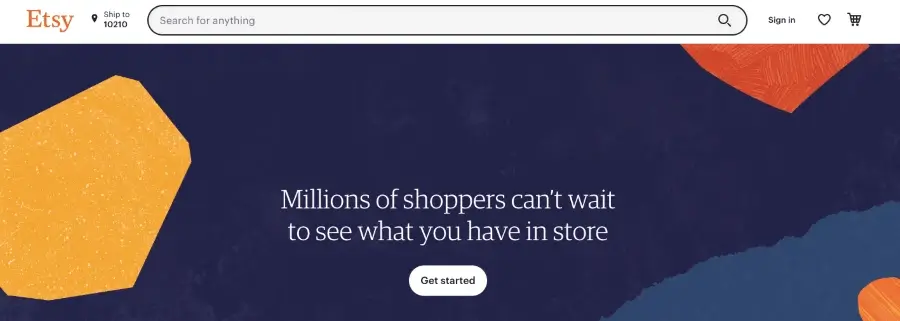
Follow the prompts and provide the following information.
Shop Preferences – These reflect your shop’s language, currency, and country
Shop Name – Choose a unique and memorable name that reflects your brand (You can change your Etsy shop name later.).
Payment Information – Set up Etsy Payments to receive payment from customers.
Billing Details – Etsy needs your credit card details to charge fees.
Etsy Subscription – Choose Etsy Standard (free) or Etsy Plus ($10 monthly). The latter adds certain features and customization options
When you reach the end, click Open your shop to launch your Etsy shop.
Customize Your Etsy Shop.

Now that you have an Etsy shop, you can start designing it.
- Add Your Logo.
Your logo must communicate your brand’s identity. It will appear on your shop, product listings, and marketing materials, helping customers recognize your brand. - Add a Banner.
The banner provides a good opportunity to introduce your brand, highlight key products, and announce sales. It grabs attention and sets the tone for what your customers can expect.
I have a full guide about how to create an Etsy banner that you might want to check out. - Set Your Policies.
Clearly define your shop policies, including shipping, returns, and refunds. This information will appear on product listings, helping you stay transparent and set customer expectations. - Add a Shop Owner.
Add a face to your brand by introducing yourself as the shop owner. Create a bio to help consumers know more about you and your brand. - Follow Image Guidelines.
Ensure you follow Etsy’s listing photo requirements to maintain a professional appearance and optimize your page.
Visually appealing and well-organized storefronts help build trust and establish your brand.
5- Connect Your Etsy Store to Your Print-On-Demand Provider.
Assuming you chose a print-on-demand partner with direct integration to Etsy, you must take the following steps.
Sync the Platforms.
Go to your chosen provider’s platform and follow the instructions. The Etsy integration process will vary by POD supplier, but here’s what it looks like on Printify.

You must authorize the POD’s API access to your Etsy account. Doing so will complete the following tasks.
Sync your product listings.
Allow the provider to access your customer’s order details.
Make your name and shipping address visible to the provider.
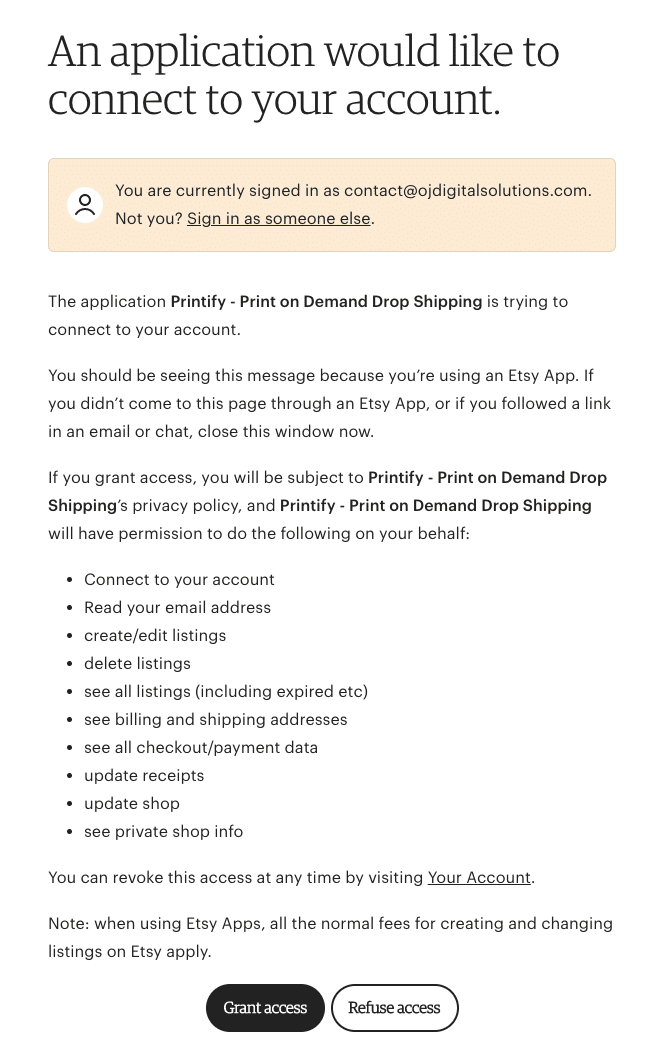
Take the time to read the policy to ensure you know what you’re permitting.
Note: Depending on the platform’s Etsy integration, you can sync multiple Etsy stores or other ecommerce platforms, such as Shopify.
However, Etsy doesn’t allow you to sync two print-on-demand platforms in one account.
Upload Your Designs.
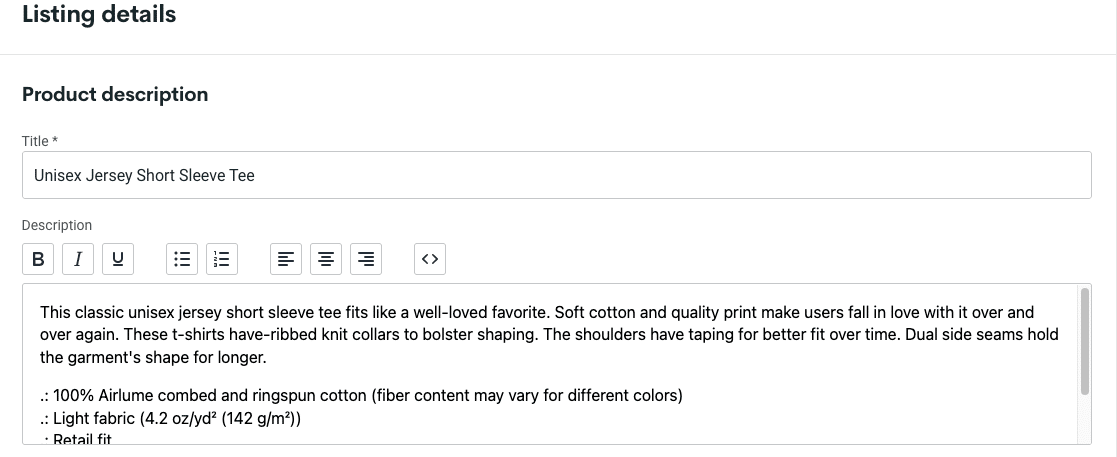
Upload your designs to your POD platform. The steps vary by platform, but this is generally how the process goes.
Choose a product.
Upload your design.
Enter the product title and description.
Set the pricing.
Push Your Products to Etsy.
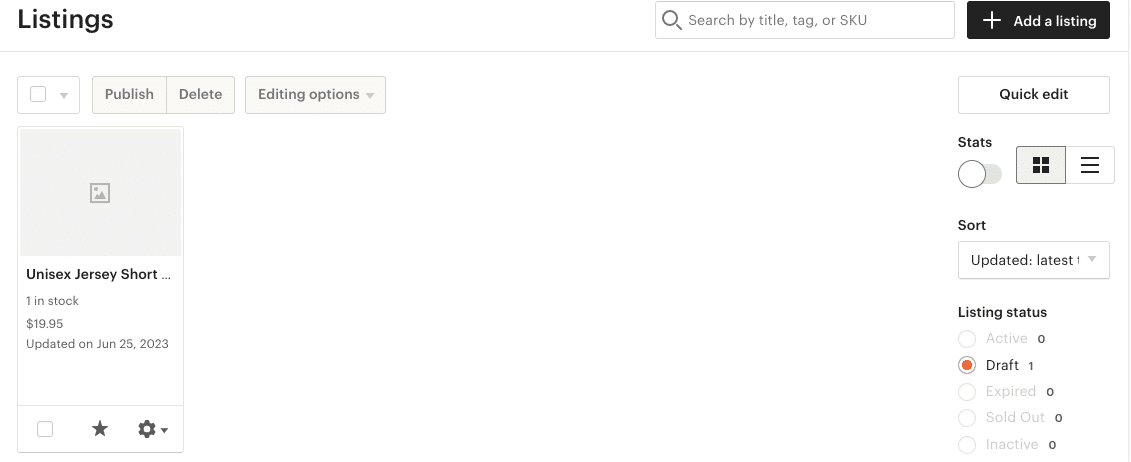
Once you’ve created product listings on your POD’s platform, you can publish them to Etsy. Most print-on-demand companies will allow you to push them to Etsy as drafts so that you can edit the listings further.
Add a Product Partner.

Etsy requires you to declare your provider as a production partner. You’ll have to enter the following details.
Location
A brief explanation
The partner’s level of involvement
You must answer some questions to help Etsy understand your partnership. You may have to explain why you’re working with this partner, your role, and the partner’s role.
If you have other product partners, you must add them, too.
A product partner is any supplier that helps you create and fulfill your orders but is not:
Another shop owner
Your shop’s employees
Your manufacturer
6- Optimize Your Product Listings.
Make your listings searchable by Etsy’s search algorithm. The goal is to rank higher on the search results page so that users will see your listings first.
You can accomplish this task using the right keywords.
Keywords allow Etsy to understand and match your listing to the user’s search. Here are the key steps to Etsy SEO.
1- Do Keyword Research.

You must find keywords that your audience will likely use when looking for similar products.
Use Etsy SEO tools, like EtsyHunt and EverBee, to find keywords related to your products. Look for words and phrases with high search volume, but consider low-competition keywords.
You must find the right balance between demand and competition.
2- Use High-Quality Images.
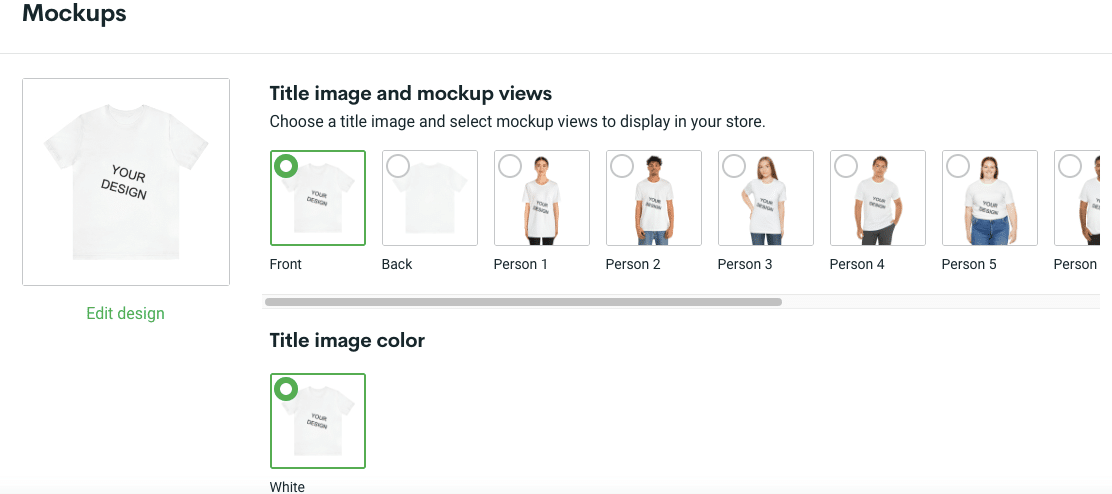
Although you don’t have your own inventory, ensure you provide high-resolution mock-ups of your design.
You can add up to ten images per listing. Maximize the allowance by providing different angles or the product in different settings.
You can even add one video to each Etsy listing.
Some providers, like Printify, have a video selection to let you showcase a more engaging design.
3- Write Compelling Product Descriptions and Titles.
Your product descriptions must be clear and concise. Product descriptions must include the following information for a buyer to make a well-informed purchasing decision.
Material
Product dimensions
Care instructions
Customization options (if applicable)
The printing technology your supplier uses (sublimation, direct-to-garment, embroidery, etc.)
Use persuasive language, but focus on crafting an engaging write-up. Highlight what makes your product different from the competition and how it can solve a problem.
4- Incorporate Keywords Into Your Listings.
Incorporate your keywords naturally into your listings, improving visibility while maintaining readability.
Ensure you place them strategically in the following elements.
Product title
Product description
Listing tags
Image file name
Alt text
Use the keywords that accurately describe your items at or near the beginning of the above elements.
Avoid placing keywords without context or forcing them into your listings. Unnaturally using them will affect the flow and readability, lowering the user experience.
Moreover, keyword stuffing can lead to penalties.
5- Publish Your Listing.
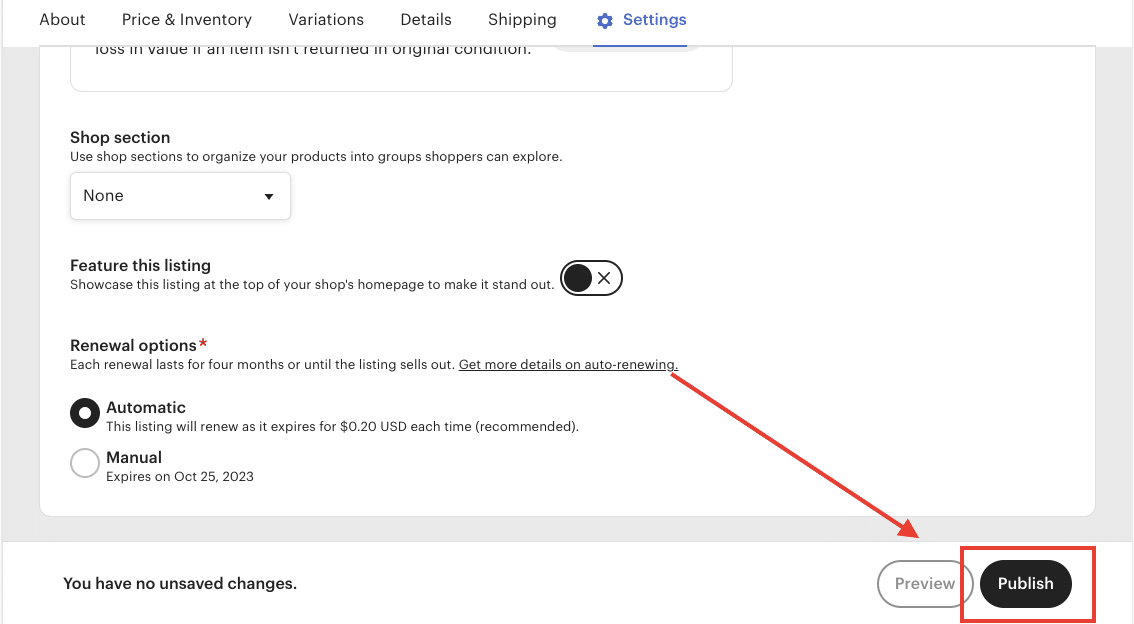
Once you’ve optimized your listing, it’s time to publish it. Click the Publish button, and it will appear on your shop and the search results page.
Congratulations! You’re now running a print-on-demand Etsy shop.
You only have to wait for an order, which will automatically go to the provider’s platform. Depending on your setup, you may also need to order from your print-on-demand partner manually.
Note: Etsy says it can take a few hours for a newly-published listing to appear in search results. Don’t panic if you try searching for your listing and don’t see it.
7- Promote Your Etsy Shop.
To ensure long-term success, launch marketing efforts to increase sales and traffic. I recommend picking one or two strategies to start.
The right strategy would depend on your goals, products, and target audience. Here are some common strategies for Etsy merchants.
Use Etsy Ads.
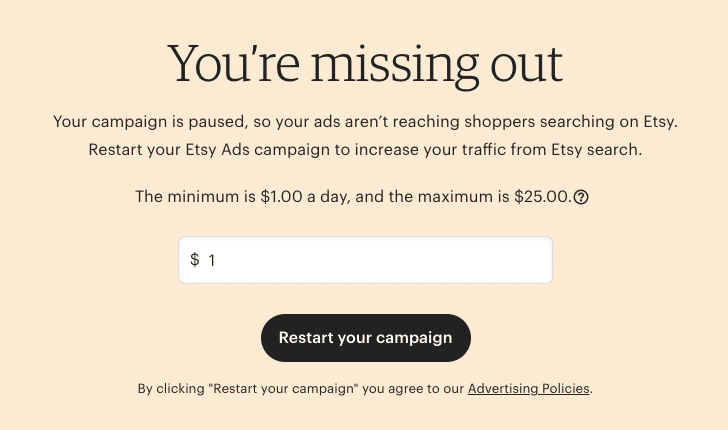
I suggest using Etsy Ads, which can help increase your listings’ visibility on Etsy’s search results page.
You can use Etsy Ads even as a beginner. It allows you to set a daily budget and select the keywords or categories to target.
Etsy offers two types of advertising options.
Onsite Ads
As the name suggests, these ads appear within the Etsy marketplace. Your listing may appear on search results, category, and product listing pages.
These ads have a pay-per-click model, in which you only pay when someone clicks on your ad.
Offsite Ads
This type of ad allows you to promote outside the platform. Etsy manages these ads on your behalf, potentially displaying them on social media, search engines, and popular websites where potential customers browse.
Unlike onsite ads, you don’t have to pay for anything unless an offsite ad leads a customer to purchase from your store. Etsy takes a percentage of the total order value.
Your ads’ effectiveness depends on the keywords you’re targeting.
Create a Social Media Presence.

Building a strong presence on social media is an affordable way to promote your Etsy shop. Signing up for social media platforms is free, and you can build an organic following without spending a cent.
It can be time-consuming, but the potential payoff is worth it.
Social media sites allow you to engage directly with the audience through likes, comments, and posts. You can post customer feedback, product images, and videos that strengthen your brand.
The key is to choose a platform that aligns with your audience’s interests.
Here are some options.
Facebook
Instagram
Twitter
TikTok
LinkedIn
Offer Excellent Customer Service.
Exceptional customer service builds trust, improves your shop’s reputation, and sets you apart.
Here are some keys to excellent customer service.
Respond to customer inquiries and messages quickly.
Use friendly and respectful language.
Empathize with the customer.
Address any issues or concerns with professionalism.
Be transparent, and ensure you deliver your promises.
Ask for feedback politely.
Great customer service helps you get repeat purchases and positive reviews, which helps attract new customers.

8- Maintain a High Listing Quality Score.
Etsy’s algorithm assigns a listing quality score that considers the following factors.
Clicks
Views
Favorites
Purchases
Listing optimization
It uses the data to determine the listing’s relevance to the user’s search and the likelihood the view will translate to a purchase.
A higher quality score means a higher ranking on the search results.
Etsy is a business, so its algorithm prioritizes products that customers will likely buy, leading to more sales and money for the platform.
You must make your product listings extremely tempting to click and buy.
What If You’re a Beginner?
Etsy boosts your listings when you’re a new seller to see how well it will perform.
Of course, you can expect your sales to start slow. You won’t see much results in the first eight weeks.
By the eighth or 12th week, you can see your shop starting to take off, provided you maintain a good listing quality score.
Increase Your Conversion Rate.

Your conversion rate measures how many of your shop or product’s visitors become customers. It directly affects your listing score, so ensure you track this metric.
Here are some tips to increase your Etsy conversion rate.
Create a compelling product description with a clear call to action.
Offer competitive prices.
Collect positive reviews.
Clearly define your returns and refund policy to boost the buyer’s confidence.
Offer free or discounted shipping fees.
9- Scale Your Etsy Business.
Once your Etsy store is stable, consider exploring growth opportunities beyond the marketplace.
I suggest you set up your online store, allowing you to develop a stronger brand identity. You can set up a store on Shopify or any other platform.
The good thing about Shopify is that it has an easy-to-use website builder.
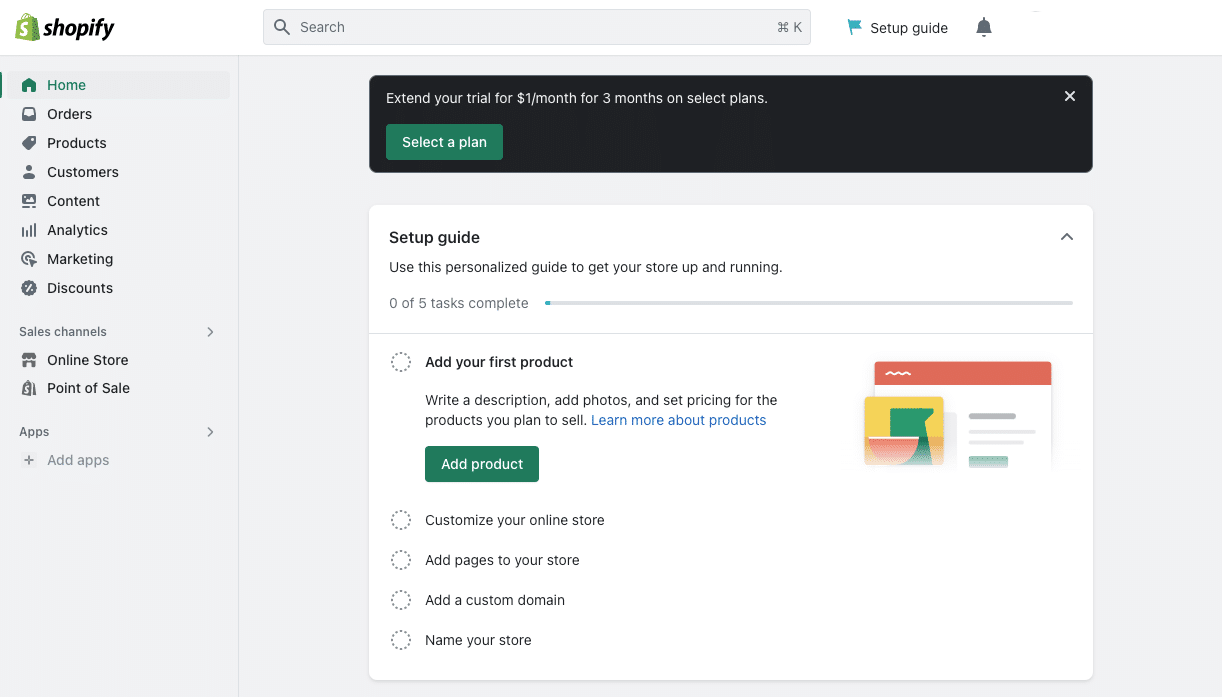
Shopify lets you freely customize your shop’s design and layout, providing more opportunities to integrate your brand. Its app marketplace lets you add functionalities like an ecommerce cart and other payment solutions to improve the user experience.
Whichever platform you choose, ensure it integrates with Etsy and your print-on-demand manufacturer for seamless management.
Explore Other Marketing Channels.

Scaling your Etsy business also requires you to use other marketing strategies.
Influencer Marketing
In conjunction with your social media strategy, partner with online personalities within your niche to boost your brand.
Email Marketing
Build an email list to update customers on the latest news about your shop, including sales, product launches, and any valuable content.
Advertising Outside of Etsy
You can also leverage other types of ads, like display and social media ads.
Content Marketing
You can add a blog section to your website to drive organic traffic.
Sell Print Products to an International Market.
Etsy is a global marketplace, so don’t restrict your sales to only one or two countries.
According to Etsy Statistics, the platform recorded 96.3 million active buyers in 2021.
Here are the top five countries that generate Etsy traffic.
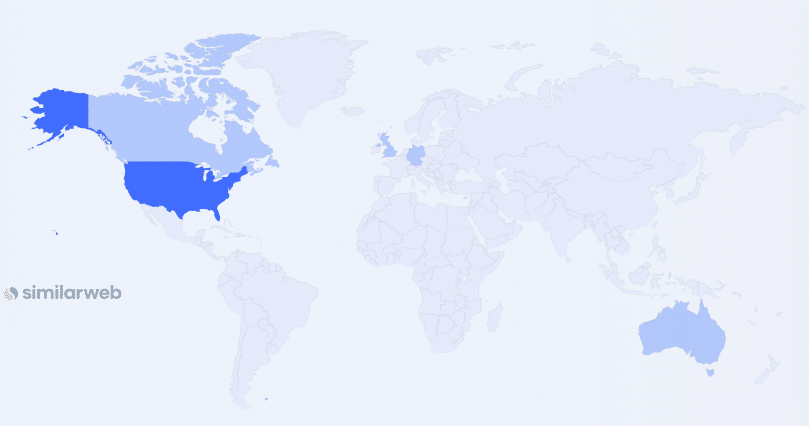
United States – 55.36%
United Kingdom – 8.91%
Canada – 5.10%
Germany – 4.29%
Australia – 3.10%
Etsy is also starting to gain traction in Asian countries.
Pros and Cons of a Print-on-Demand Business
| ✅ PROS | ❌ CONS |
|---|---|
| Low-cost, low-risk | Limited control over production |
| No inventory management | Post-customer service challenges |
| Less time-consuming | High base product costs |
| Wide product catalog | Branding and packing |
| Scalability |
Print-on-demand is a popular business model with numerous benefits and potential drawbacks.
Advantages
Low Startup Costs and Low Risk
You don’t have to buy inventory, equipment, and tools to start selling. Many POD providers are also free-to-use.
The only upfront costs you must prepare for are Etsy’s listing fee, photo editing software (if paid), and graphic designers (if you’re outsourcing).
Thus, starting a POD business has fewer risks.
No Inventory Management
You don’t stock products, meaning there’s no inventory to track. You don’t have to worry about storage or unsold stock.
Less Time-Consuming
The POD provider handles the order fulfillment process for you, from preparing the product to shipping it to the customer. You don’t have to pack orders, cut bubble wraps, and drop off a package at the shipping service.
Extensive Range of Products
You can offer virtually any customizable product, from apparel to home decor. It’s easy to expand your product offerings without inventory issues.
Scalability
Many POD providers can keep up with your demands as your business grows. Many of them offer global shipping. You don’t have to worry about your time, space, and staff considerations when you scale your business.
Disadvantages
Limited Control over Production
You don’t oversee the production process. You can only rely on the POD provider to prepare the order properly and fulfill them within the timeframe, so you must choose the most reliable supplier.
Post-Customer Service Challenges
It can be challenging to solve issues you didn’t cause yourself. Problems like product defects or shipping delays can arise because you are not involved in the production and fulfillment process.
Higher Base Product Costs
Ultimately, the base product costs are higher than if you source the products in bulk. This can affect your competitiveness in the market and result in lower profit margins.
Branding and Packaging
You can’t fully customize the packaging and branding of your products. Some providers only offer generic packaging. Others might provide customization options, like branded boxes and inserts, but they cost more than if you source them.
Should You Start an Etsy Print-on-Demand Business?
The answer depends on you, but these questions can help you decide.
Do You Want To Start an Etsy Store with Minimal Costs?
Starting a business is often costly. However, print-on-demand solutions lower upfront costs by taking care of manufacturing, inventory, and shipping.
Are You Ready for the Possible Drawbacks of a POD Business Model?
You must have a strategy to overcome this model’s disadvantages. If you set realistic expectations, you can fully maximize the advantages.
Do You Want To Tap Into Etsy’s Specialized Customer Base?
Many Etsy buyers have a high purchasing intent when searching the marketplace for products. They’re ready to spend higher than usual to score unique products they won’t find anywhere else, including print-on-demand products.
Do You Want to Leverage Etsy’s Traffic?
Etsy has millions of customers worldwide. It has a built-in audience you can tap into when you start selling.
Examples of Successful Print-on-Demand Stores
Do you want an extra boost of motivation? Here are some Etsy print-on-demand success stories.
HexAppealClothing
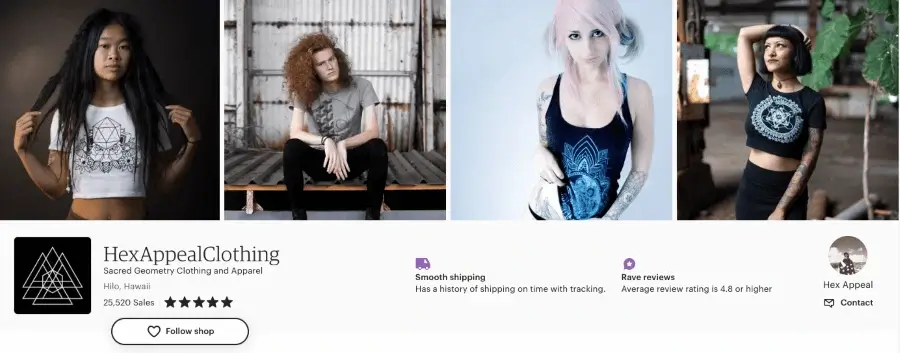
Approximate Revenue: $300,000
HexAppealClothing focuses on unique geometric designs on a variety of clothing products. Besides the unique creativity, HexAppealClothing also offers custom sports bras and leggings, which are hard to find at regular retail outlets.
SheMugs

Approximate Revenue: $100,000
SheMugs have become extremely successful in selling text-based designs. The art is pretty simple, but it effectively captures its target audience. Aside from mugs, it also offers other products, like aprons, candles, and cosmetic bags – all marketed toward its audience.
iLikeMaps

Approximate Revenue: $120,000 (from all selling channels)
iLikeMaps is a print-on-demand shop focusing on maps, borne from the shop owner’s passion for maps. With his skills and technologies, he was able to offer interesting products you would be hard-pressed to find anywhere else.
PooSparkles

Approximate Revenue: $200,000
PooSparkles offers funny and quirky products. You can tell from the name that you can’t expect anything serious from this shop, but it’s popular nonetheless. However, I must warn you that using celebrities’ faces without their consent is illegal.
WimlyMugs

Approximate Revenue: $100,000
The owner of WimlyMugs created their fortune by offering customized products. The visual appeal plus the freedom to personalize a product makes their offerings perfect for gifts.
Frequently Asked Questions (FAQs)
Can You Do Print-on-Demand With Etsy?
Yes. Etsy allows you to work with print-on-demand providers to help with production and order fulfillment. The platform also integrates with many print-on-demand companies for Etsy, like Printify and Printful.
Is Dropshipping Allowed on Etsy?
It’s often on a case-to-case basis. Etsy doesn’t support the traditional dropshipping model, which usually involves mass-produced items. However, you can tailor an Etsy dropshipping template to fit the platform’s product requirements.
What Do I Need To Prepare Before Selling Print-on-Demand on Etsy?
Before starting an Etsy print-on-demand business, here are some things you must do.
Research the market and your target audience.
Choose a reliable POD service.
Identify your unique selling proposition.
Craft a business plan.
Create unique and visually appealing designs.
Is Etsy Print-On-Demand Good for Beginners?
Yes. Print-on-demand doesn’t require technical knowledge, although you need some creativity. It provides a low-cost option for aspiring entrepreneurs without needing inventory management.
Which Print-on-Demand Services Offer White Label Products?
White-label services allow you to rebrand the products and sell them as your own. Here are some print-on-demand providers with this option:
Printify
Printful
Gooten
Teelaunch
You can customize your own logo and branding to build your identity.
How Much Does It Cost To Use Etsy?
Etsy charges several fees, including:
Listing fee
Transaction fee
Payment processing fee
Etsy shipping costs (applicable to non-POD sellers who use Etsy shipping labels)
Advertising costs (optional)
How Much Money Can You Make with Print-on-Demand?
You can earn figures similar to the most successful Etsy POD stores I mentioned above. However, it depends on your niche, product selection, pricing strategy, and marketing efforts. You must research the market, understand your audience, and offer visually appealing designs to be successful.
What Is the Difference Between Printify and Printful?
Printify and Printful are both print-on-demand providers with diverse product offerings. However, they’re different in these aspects:
Product offerings
Production facilities
Third-party suppliers
Pricing
Integrations
Can I Use Printify and Printful Together?
Yes. Many print-on-demand sellers combine Printify and Printful to diversify their product offerings and access different production facilities. You can do the same to leverage the strengths of both platforms.
How Do You Find Ideas for Shirts on Etsy?
Not sure what designs you can make? Here are some quick tips.
Research keywords related to your audience.
Explore popular trends.
Analyze your competitors’ listings.
Seek inspiration from blogs and social media.
Research the market and look for gaps and untapped opportunities.
Can You Sell Prints on Etsy Using Shopify?
Yes. Etsy integrates seamlessly with Shopify, allowing you to sync your product listings, manage your inventory, and process orders on both platforms.
Can People Sell Prints of Other People’s Designs on Etsy?
No, unless you’ve obtained explicit permission from the rights holder. Etsy has strict intellectual property policies; violating them can destroy your business. You must not also use others’ characters and other design elements.
Why Are My Products Not Selling on Etsy?
Having no sales on Etsy could be due to the following reasons.
Low visibility on Etsy’s search results page
Lower product quality than competitors
Incomplete or confusing product descriptions
Pricing issues
Not enough marketing
No unique selling proposition
Evaluate your product listings, keyword strategy, and marketing efforts to determine your weaknesses and adjust accordingly.
The Bottom Line
An Etsy print-on-demand business is a low-cost, low-risk solution for creatives and aspiring entrepreneurs.
However, it doesn’t mean making money using this online business model is easy.
To be a successful Etsy seller, you must offer designs that appeal to your audience and stand out from the competition. Your keyword research and marketing strategy work together to improve your visibility and attract new customers.

